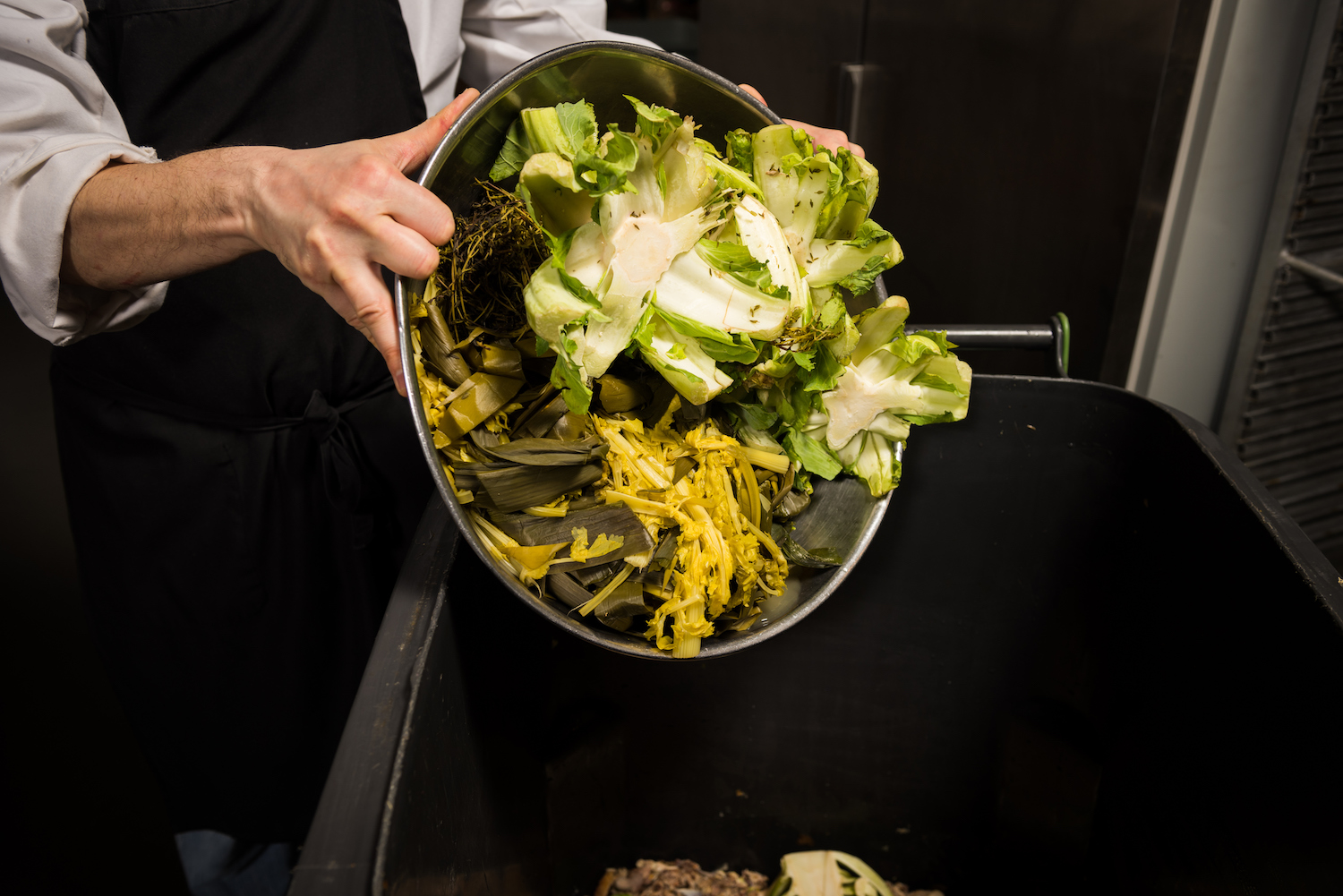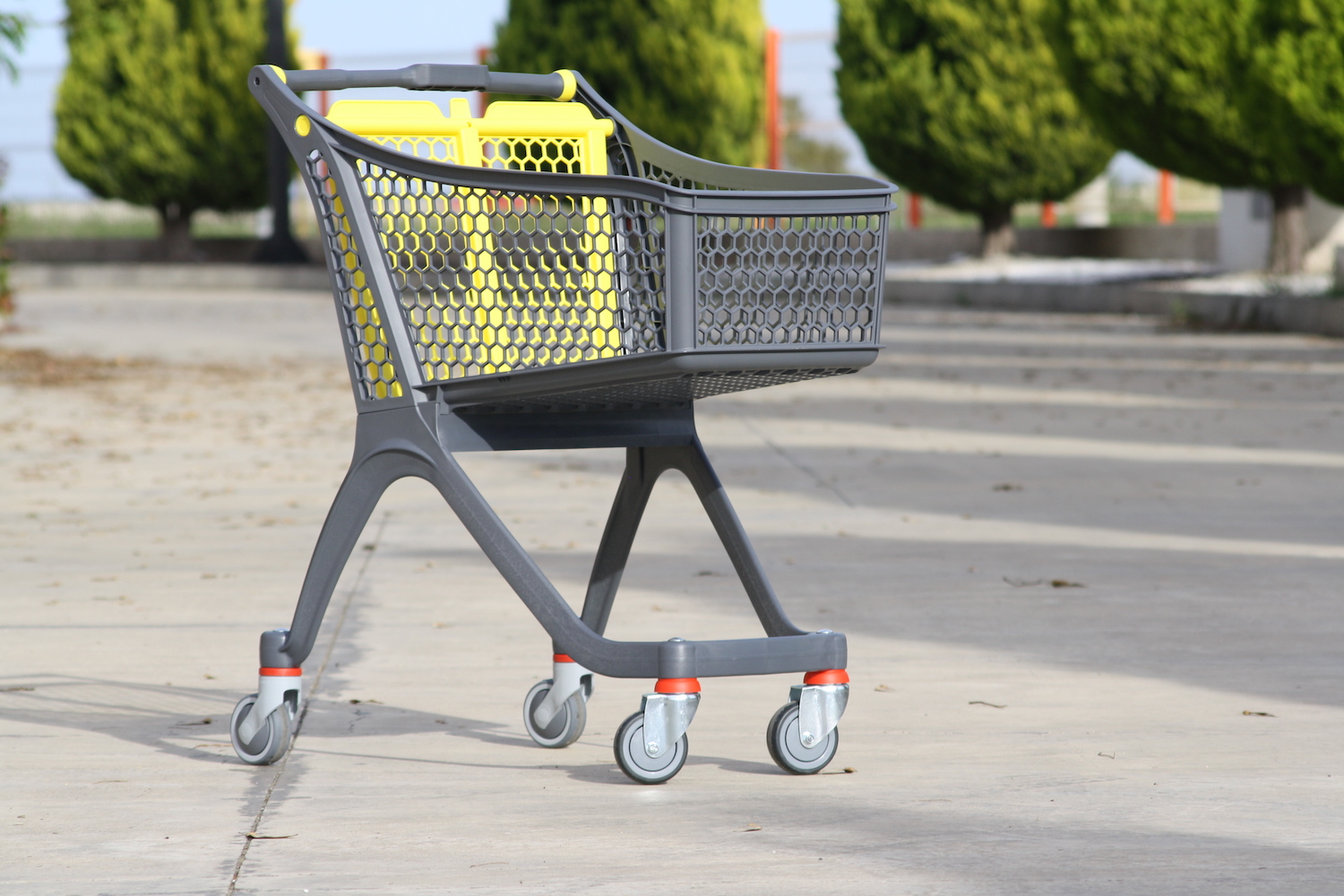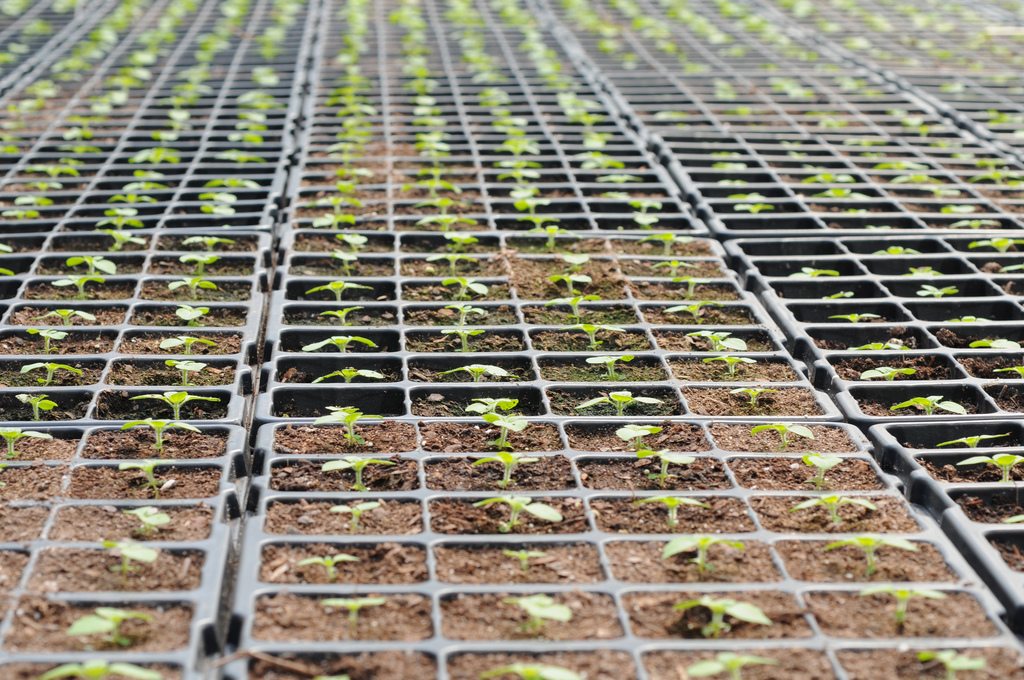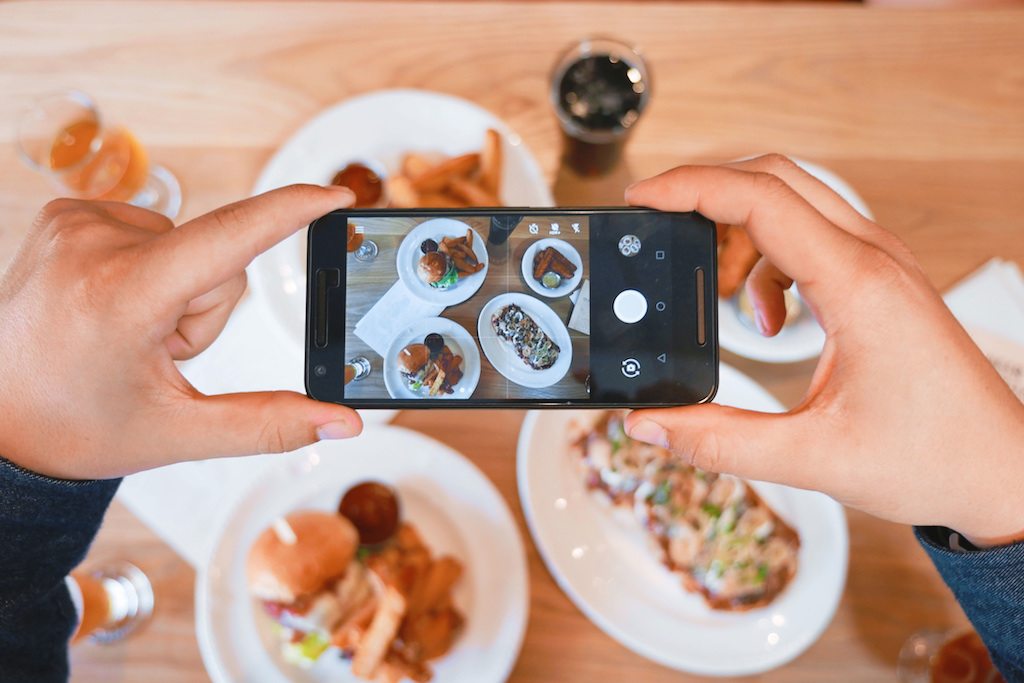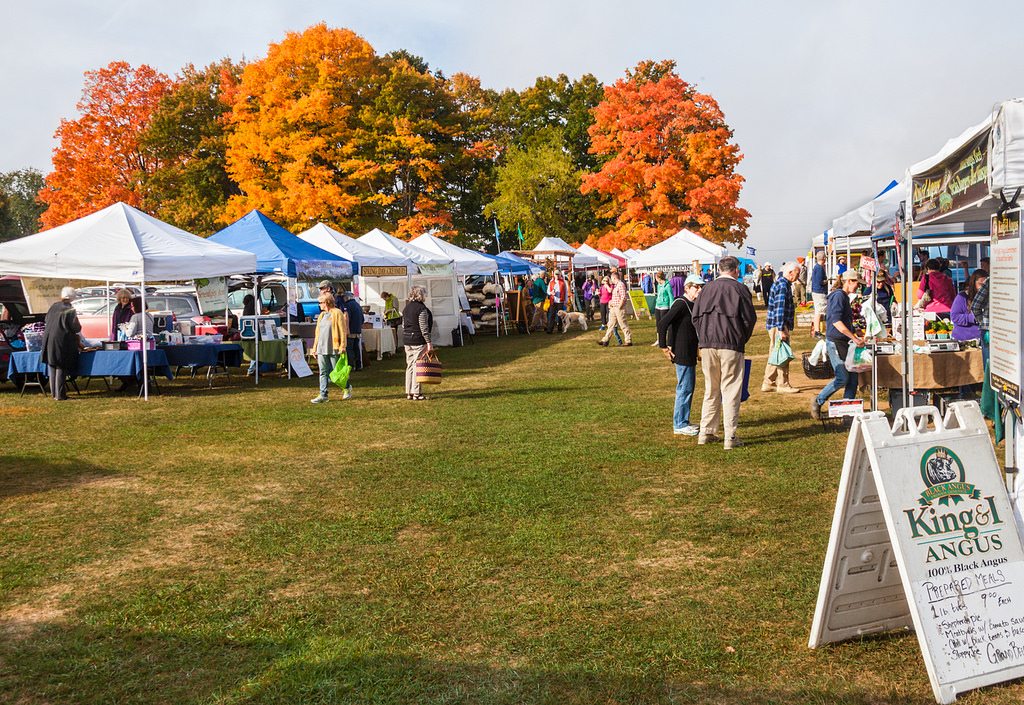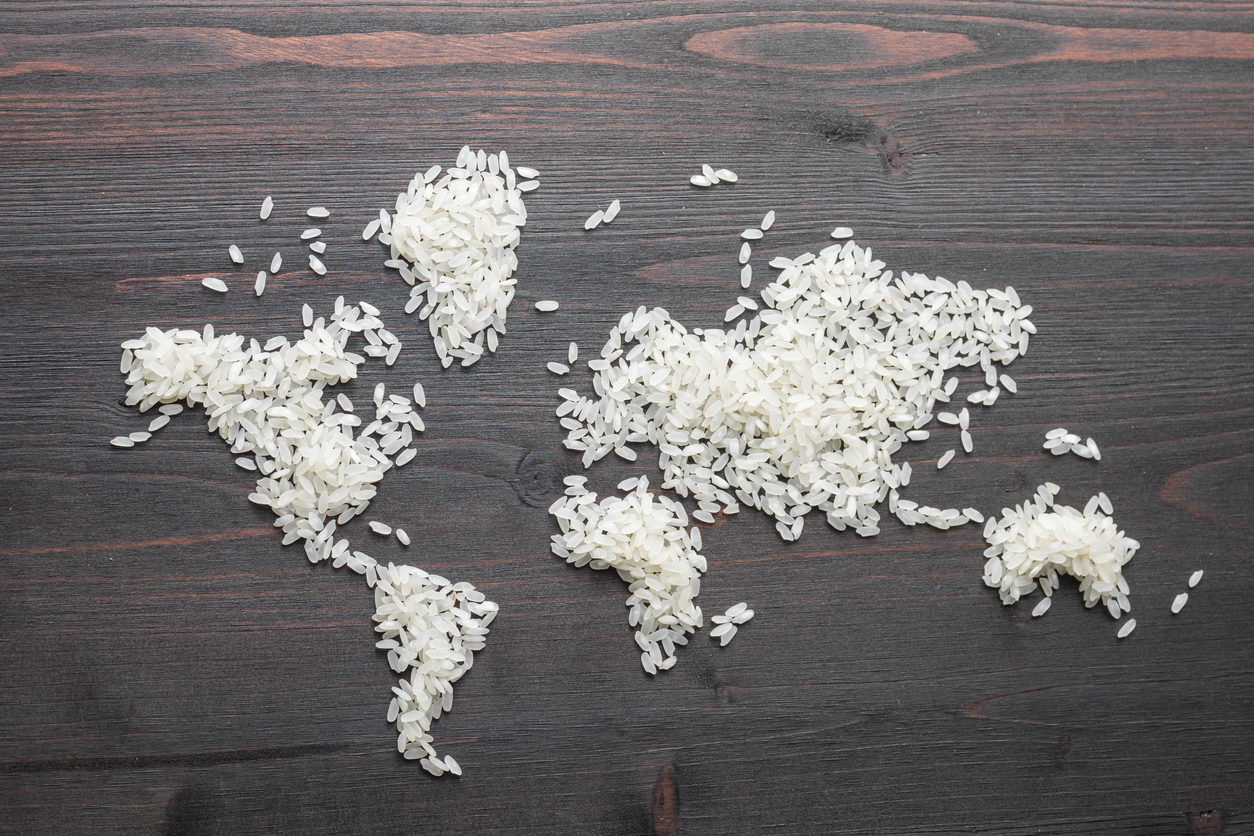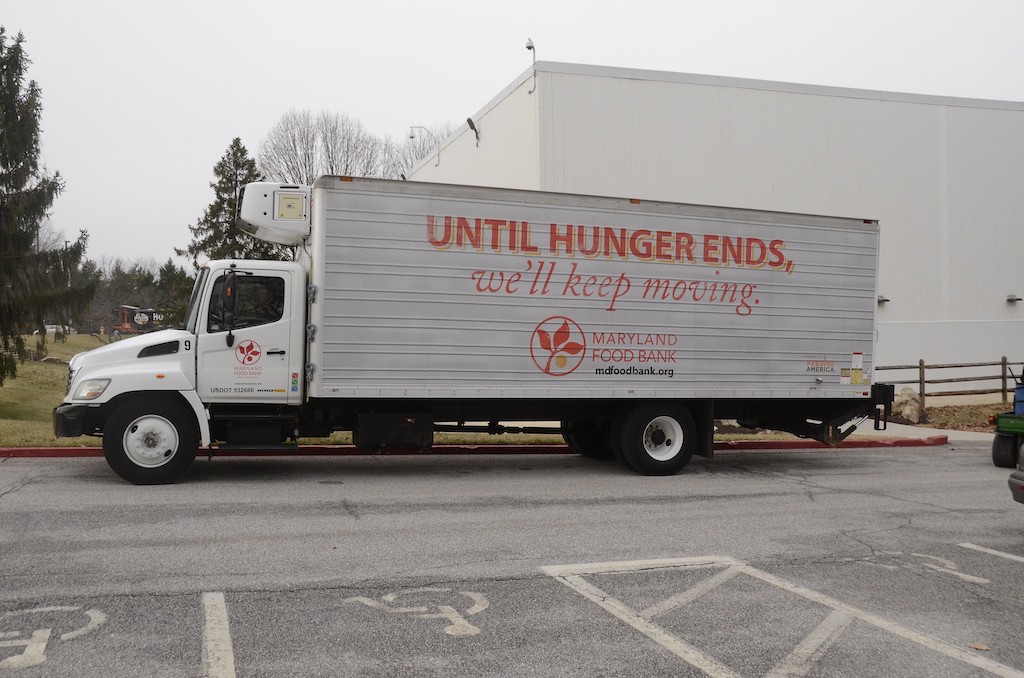Despite an increased national focus on food waste, U.S. restaurants still toss a startling 94 percent of their excess food.
At the end of the day, Karen Paek loaded up her car with several garbage bags of unsold loaves of bread and drove to a homeless women’s shelter on Los Angeles’ downtown Skid Row. Paek, the manager of Bread Lounge, a café and bakery in LA’s trendy Arts District only a mile from Skid Row, had donated bread before, but this time the shelter politely declined.
“The front desk person gave me a look and said, ‘Oh, more bread?,” Paek said. There were rows of tents outside the shelter, so Paek offered free bread to the homeless people living there. “People would look inside the bags and say no thanks, or just walk away,” she said.
Free food seems like a straightforward opportunity, both for hungry people and for businesses with a food waste problem. One in nine Americans does not know where their next meal is coming from, with big cities at the center of the problem because of large homeless populations: 78,676 homeless people in New York City, according to a 2018 count, and 58,936 in Los Angeles County as of last June; together those numbers represent more than 20 percent of the country’s homeless.
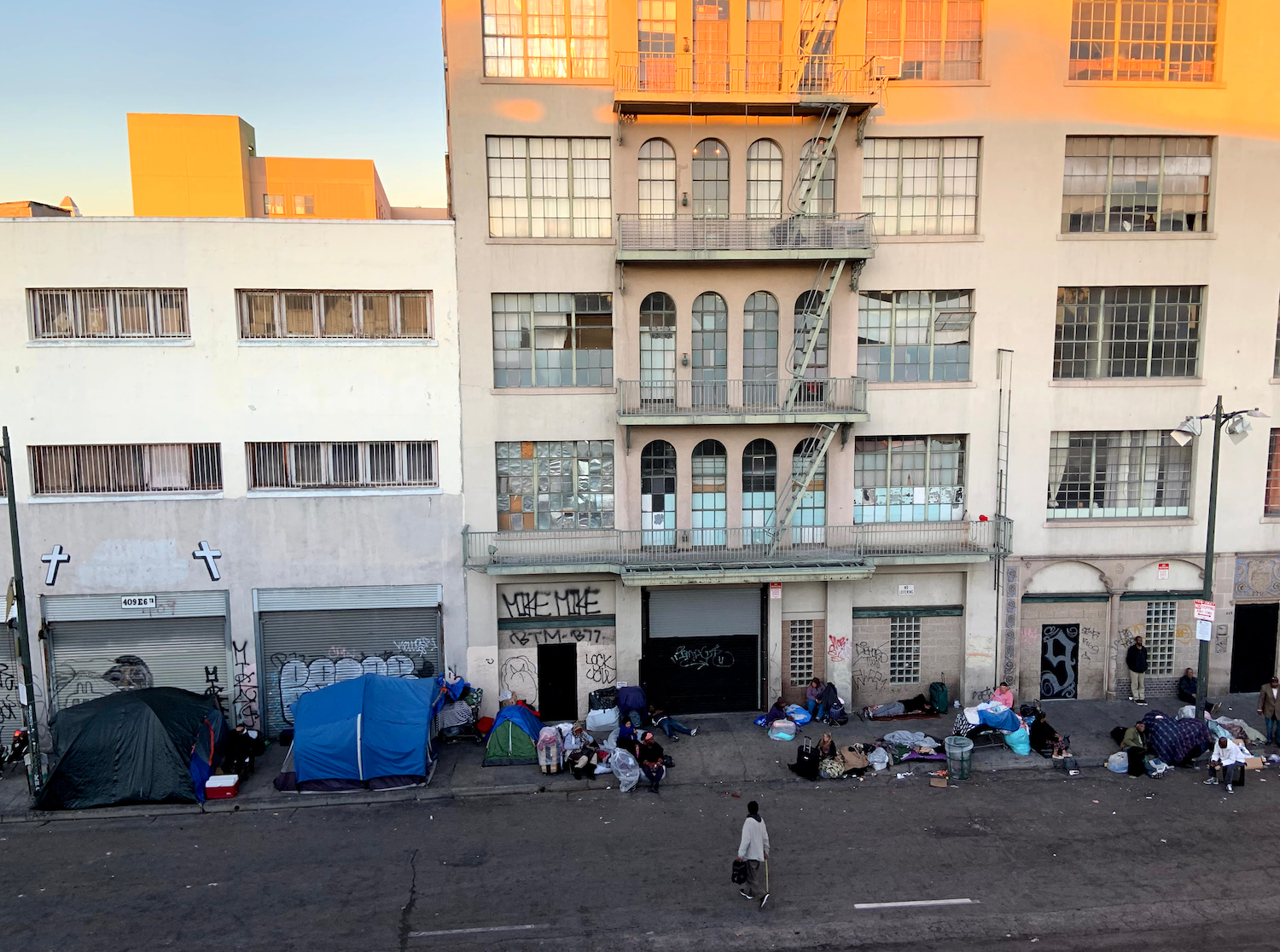
Skid Row, in downtown Los Angeles, is home to much of the city’s growing homeless population
Mackie Jimbo
And yet restaurants donate only two percent of their food waste, according to a 2016 report by the Food Waste Reduction Alliance, an organization dedicated to reducing food waste in U.S. manufacturing, retail, and foodservice sectors. Some of it goes into staff meals, but restaurants throw away almost 94 percent of their excess food—most of which ends up in landfills, where it releases methane gas that contributes to global warming. The resources used to produce that food also go to waste.
A new generation of activists and entrepreneurs intends to make it easier to do the right thing: to educate restaurants about how to donate, and to help charities utilize the type of food waste restaurants generate, like produce trims and prepared foods. They also intend to use technology to match supply and demand—so that a well-intentioned supplier like Paek can find a home for all that bread.
Rethink Food NYC, founded in July 2017 by former chef Matt Jozwiak, turns restaurant food waste into ready-to-eat meals at a large commissary kitchen in Brooklyn Navy Yard, with 20 paid employees as well as volunteers. Over the last two and a half years, Rethink has collected over 240,000 pounds of food that would otherwise go to waste—including nearly 11,800 pounds from New York City’s Eleven Madison Park, winner of three stars from Michelin and four from The New York Times, where a dinner costs $335 before anyone orders wine.
Rethink Food NYC operates like a specialized catering service, delivering meals to soup kitchens. Jozwiak convinced restaurants to donate to Rethink by addressing every concern they raised. “First, they said it was illegal,” Jozwiak said. “So, we found a lawyer to confirm that it’s not,” because federal and state Good Samaritan laws protect businesses from liability for good-faith donations to a non-profit.
Cost is another obstacle. Jozwiak knew, from his own time in the kitchen, that it was cheaper to throw things out than to repurpose them. “If a restaurant has two cases of cauliflower,” he said, “it costs more to have a line cook do something with them—like making a velouté or pickling—than to throw them away.”
But donations make good business sense. “We worked with accountants to show restaurants that it’s a good deal to write off these donations,” said Jozwiak. And Rethink handles the logistics: the non-profit provides packing containers and extra storage racks, makes daily pick-ups in large refrigerated trucks, and works with a food safety specialist to ensure Rethink’s procedures meet food safety standards.
“We want to expand the public’s understanding of who can take food, what they can take, and how to use it effectively.”
That is how EMP’s leftover potato rosti shows up as an addition to Rethink’s soups and salads. “We always mix a lot of grated potatoes with clarified butter and season it really well,” says chef de cuisine Brian Lockwood. Whatever the restaurant doesn’t end up using goes to Rethink.
“You have to think of soup kitchens like a business,” says Jozwiak, who considers Rethink a specialized catering service. “We get all the food in from restaurants, sort and organize it, and cook ready-to-eat meals. Then we’ll talk to our non-profit clients about what they need—it could be 300 meals this week, or they just need protein—and ask what is a good time to drop this off.”
On the west coast, Alyson Schill plans to add tech to the mix with Refeed, an app that helps non-profits locate donors who have the food they need. “I wanted to see a solution to this logistics problem,” says Schill, “that would match food to the right people.” The service, which she will launch in Los Angeles, Alameda, and San Diego counties in early 2020, will allow businesses to list the excess food they have to offer—and non-profits can select the donations they want to receive. The app will be free, with additional reporting and tracking features available for a monthly fee the group has not yet set.
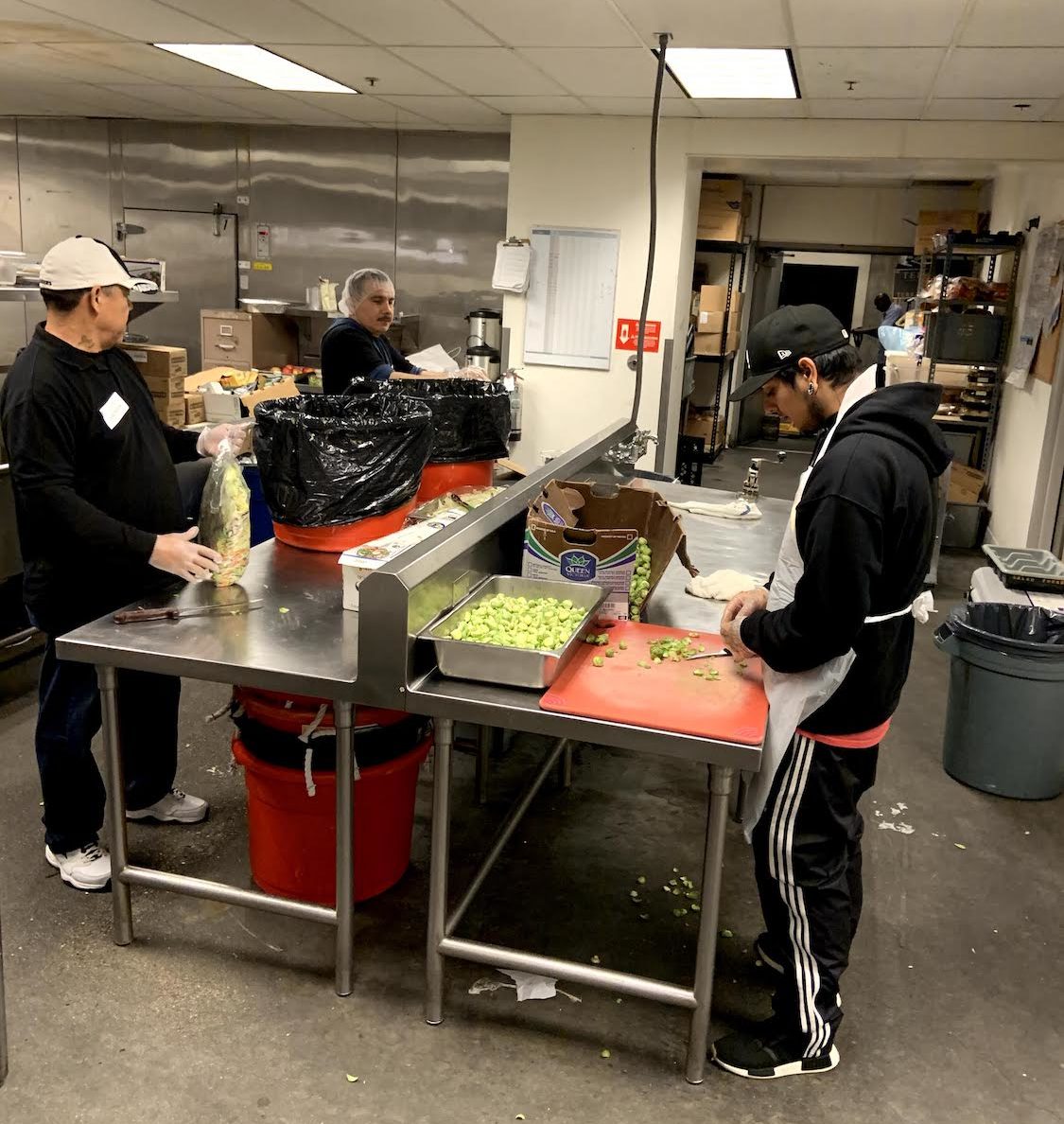
The Midnight Mission, a homeless shelter in Los Angeles’ downtown Skid Row, has a large commercial kitchen where staff turn donated food into hot meals for the hungry
Mackie Jimbo
“You can’t just pick a non-profit,” says Schill. “The non-profit has to want the food.” A receptive charity or shelter could reach out to a donor like Paek before she ever got in her car.
FoodCycle LA, a non-profit that collects and redistributes excess food in Los Angeles, plans to turn to tech as well, to help smaller food charities that often struggle to find enough food. Executive Director Nancy Beyda says the group is working with Food Oasis LA, a project launched by Hack for LA, a group that brings together volunteer coders, designers, community partners and local government, to develop a database of non-profits that accept food and serve meals. The database will launch in early 2020.
“There are smaller food banks, like at churches on the weekend, that are not on the map,” says Beyda. “We want to expand the public’s understanding of who can take food, what they can take, and how to use it effectively.”
Despite a growing commitment to reduced food waste, restaurants at both ends of the spectrum are at the mercy of their customers and their menus, both of which change. Bread Lounge might have enough bread today, not enough tomorrow, and too much the day after that.
“It’s really difficult to gauge how many items to make,” says Paek. “We never know who’s going to come and buy out the whole store one week. And if they don’t come the next week, then we made all this extra stuff.”
Fine dining restaurants like EMP have more control, because diners make advance reservations for a set tasting menu—but even then, the restaurant ends up with some leftovers. “We produce everything fresh everyday: every puree, every sauce, every blanched vegetable,” says Lockwood. “We try to make just the right amount, but we’ll end up with pints or quarts extra every night.” Seasonal menu changes mean a spike in leftovers, until the kitchen figures out precisely how much to make.
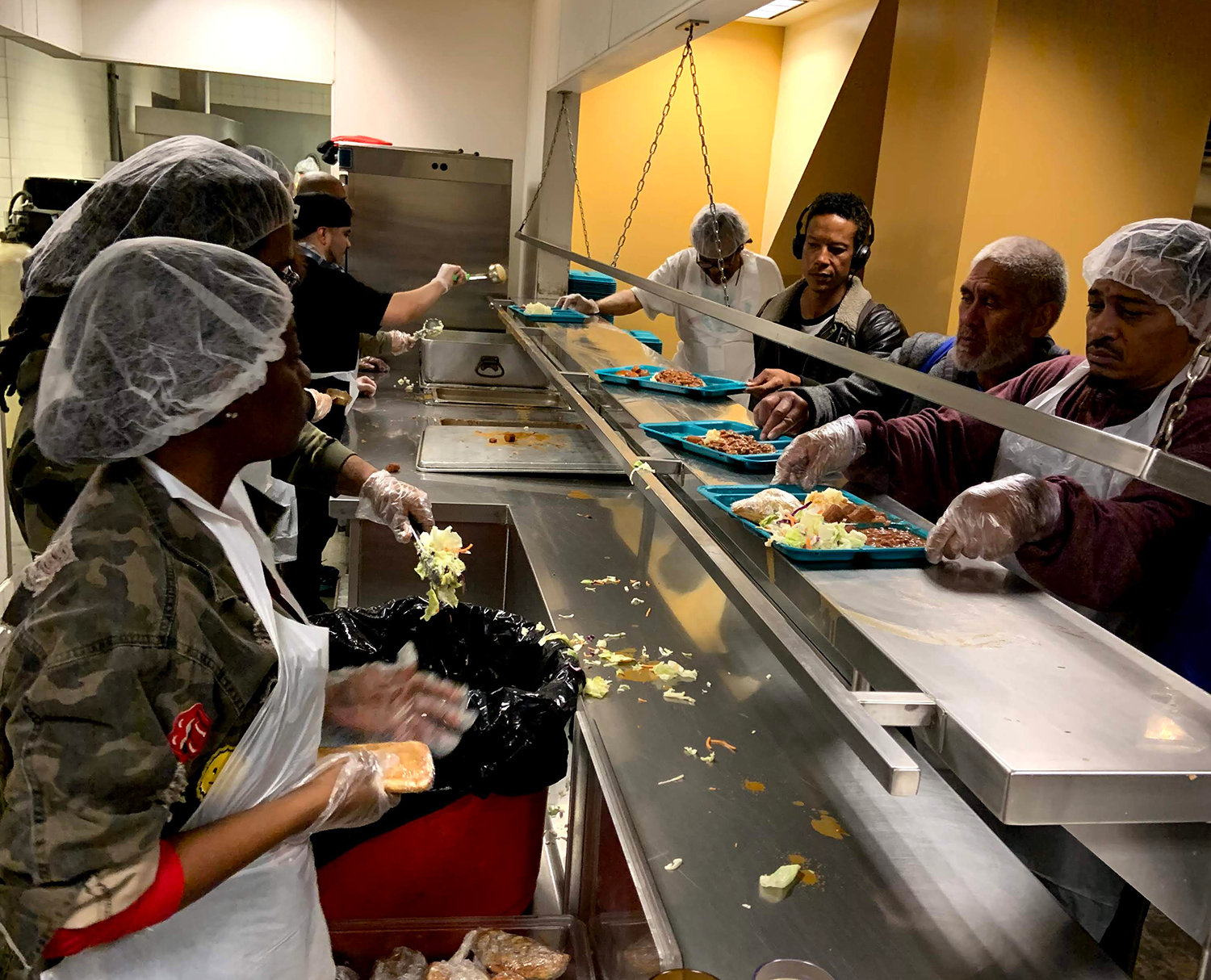
The Midnight Mission serves three hot meals every day except Sunday, when it serves two
Mackie Jimbo
Some charities are so big that individual restaurant donations would barely make a dent. Los Angeles Regional Food Bank collects and distributes tens of millions of pounds of food every year to those in need, but does not have a facility to prepare or serve on-site, making it difficult to transport and store prepared foods. “We work very little with restaurants,” says Elizabeth Cervantes, agency relations and product donations director for LA Regional Food Bank, though the organization does receive packaged ready-to-eat meals from chains like Starbucks.
The Midnight Mission shelter on Skid Row, in contrast, serves three hot meals every day except Sunday, when it serves two, to one million people per year, and has a large commercial kitchen with walk-in refrigerators and racks of dry, canned, and boxed ingredients neatly arranged in their pantry. “We make everything from scratch, even down to the sauces,” says Frank Suarez, one of the mission’s associate chefs. With that kind of volume, the charity relies on large retail donors like Costco, Farmer John and Trader Joe’s.
But Postmates has found a way to collect individual restaurants’ food waste with FoodFight! a feature in its app that enables participating restaurants to have excess food picked up within 20 minutes of a request and delivered to nearby local shelters by Postmates. Since Postmates introduced the program in October 2018, it has launched in 162 cities and delivered more than 73,000 pounds of food, free for both restaurant donors and non-profits.
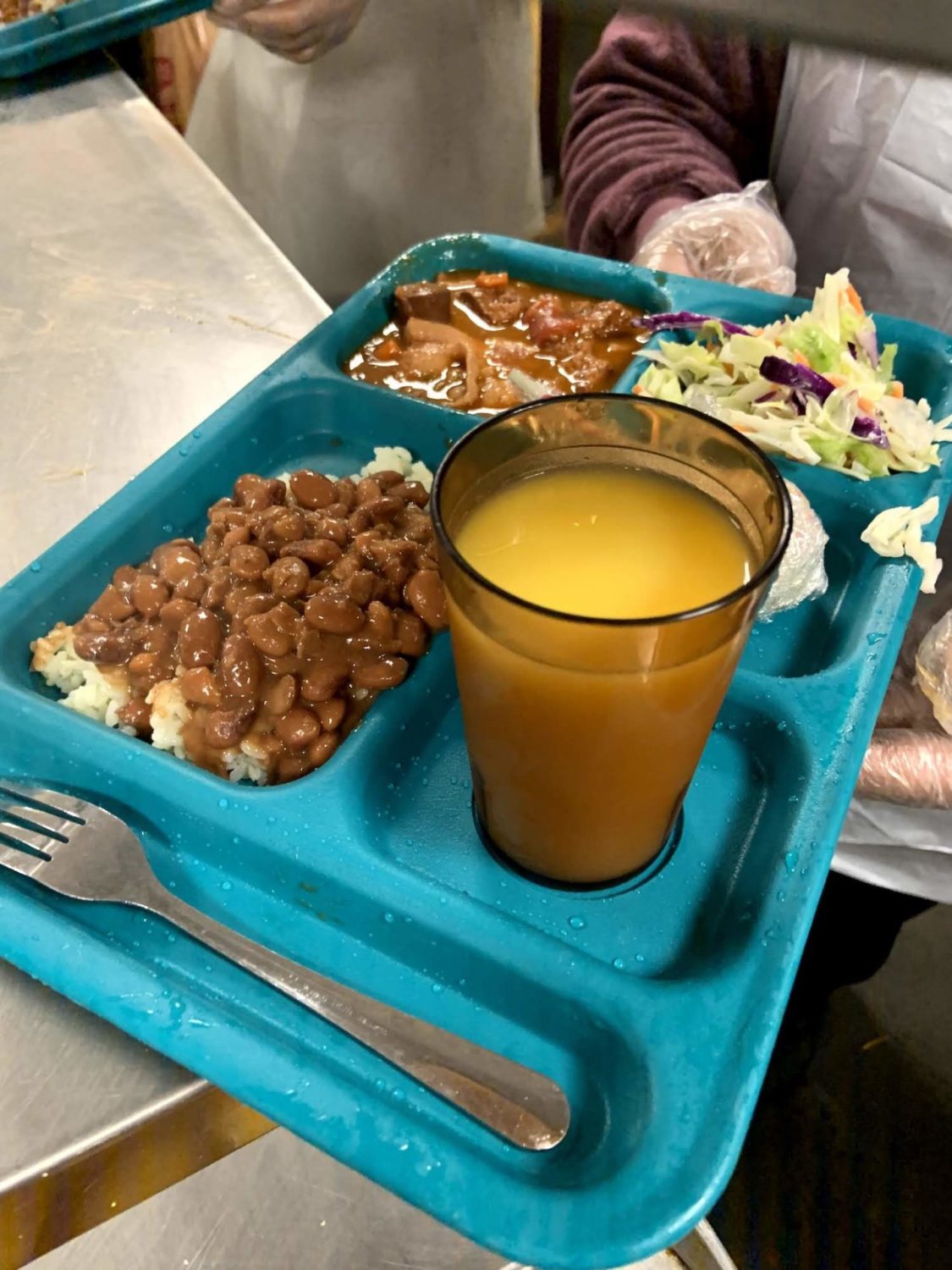
Mackie Jimbo
“We make everything from scratch, even down to the sauces,” says Frank Suarez, associate chef at The Midnight Mission
Chain restaurants can create their own network, because they have more food and resources. Pret A Manger, a fast casual restaurant with over 450 locations worldwide, has donated all excess refrigerated, ready-made sandwiches, salads, wraps, and baguettes at its UK locations since 1986, and at its U.S. locations since 2000. Pret partners with local food rescue organizations, like City Harvest in New York City, that have the infrastructure and equipment to pick up excess food after the stores close. In 2018 alone, Pret donated approximately 5 million pounds of food in the U.S.
Like Pret, Dig, an East Coast-based fast-casual chain with over 30 locations, works with local food rescue organizations, typically donating leftover prepared ingredients like roasted sweet potatoes, meatballs, and rice and farro. In 2019 alone, Dig donated over 170,000 pounds of food and paid all collection and tracking costs. “There is this idea that food donation services, because they’re a good cause, should be free,” said Elizabeth Meltz, Dig’s head of environmental health. “We need to recognize them as a business. Why pay for food to go to a landfill, but refuse to pay for it when it’s going to someone in need?”
Because of new legislation, California restaurants will have to reduce their disposal of excess food as part of the state’s efforts to combat climate change. State bill 1383 sets a statewide target to reduce organic waste in landfills by 50 percent by 2020, and to recover at least 20 percent of edible food waste by 2025. Local jurisdictions can fine businesses that fail to meet these targets.
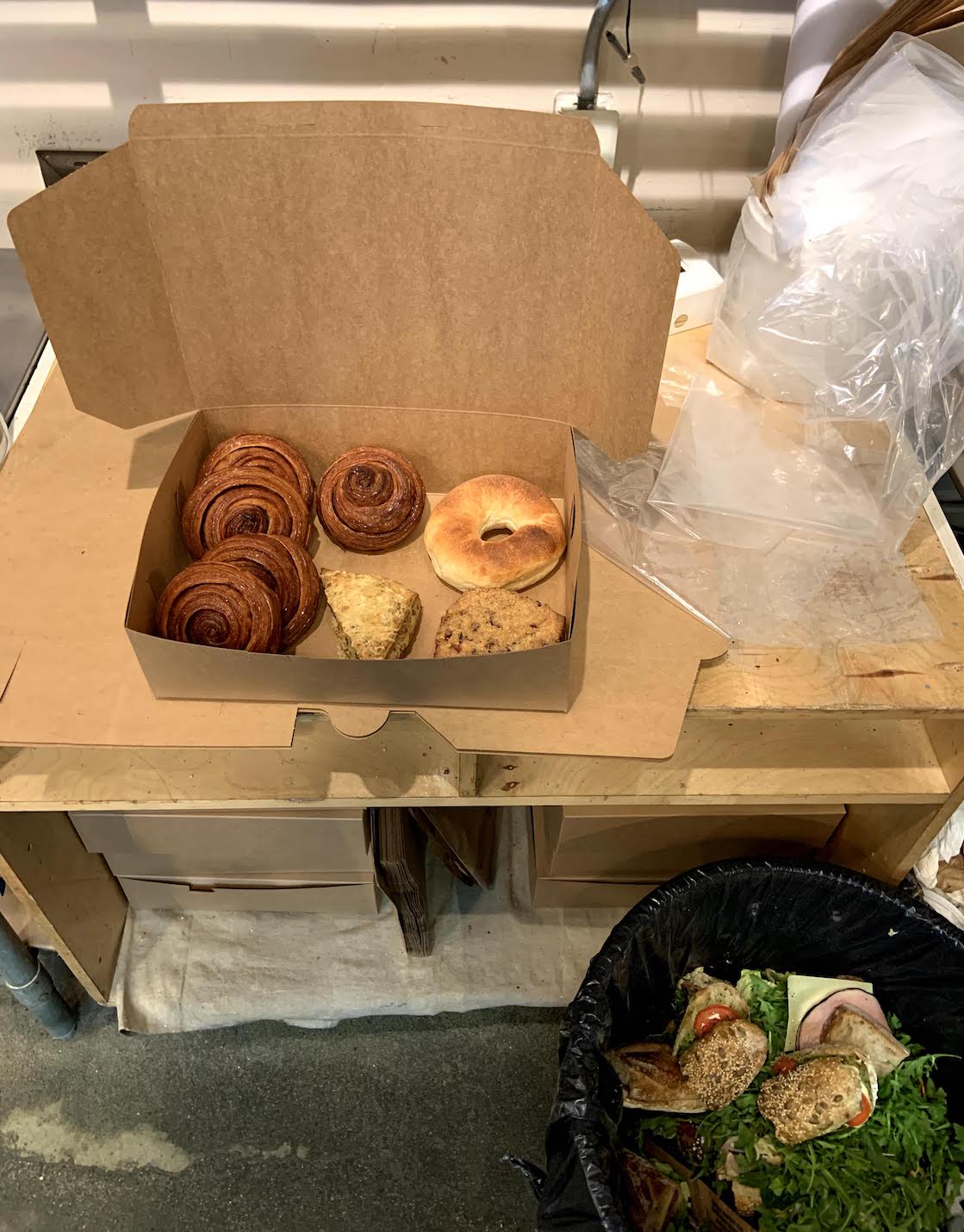
Mackie Jimbo
Bread Lounge donates leftover, unsold pastries that otherwise would be thrown away
RecycLA, a Los Angeles recycling program established in 2017, requires commercial waste and recycling providers to work with food rescue organizations to divert excess food from landfills, and to provide annual funding to these organizations. LA Sanitation & Environment, which oversees recycLA, estimates that rescue operations recovered over 11 million pounds of food, and received over $1 million in funding, between January 2018 and November 2019. The program is the first in the country to require waste and recycling providers to work with their customers to rescue excess food, according to the department.
While rescuing excess food from restaurants and redistributing it to those in need is an immediate response to a growing problem, some—even those involved in the effort—see it as a Band-Aid, rather than a long-term solution. “We need to work on the root systems that are creating food insecurity,” says Schill. Her long-term goal is to make Refeed unnecessary, by focusing attention on the underlying causes of homelessness and hunger, and on improved efforts at zero waste in restaurants. “Maybe Refeed won’t focus as much on food donations,” in the future, says Schill. “But, we will be shifting our focus to continue our main goal: healing the community through food, bringing communities together, and bringing services and resources to the have-nots.”
In the meantime, small steps: Paek found out that a non-profit called Helping Hands Foundation picked up leftover Bread Lounge bread a few times a week. She asked if they’d be willing to show up every day. They were. She no longer has to go hunting for a home for excess food.
